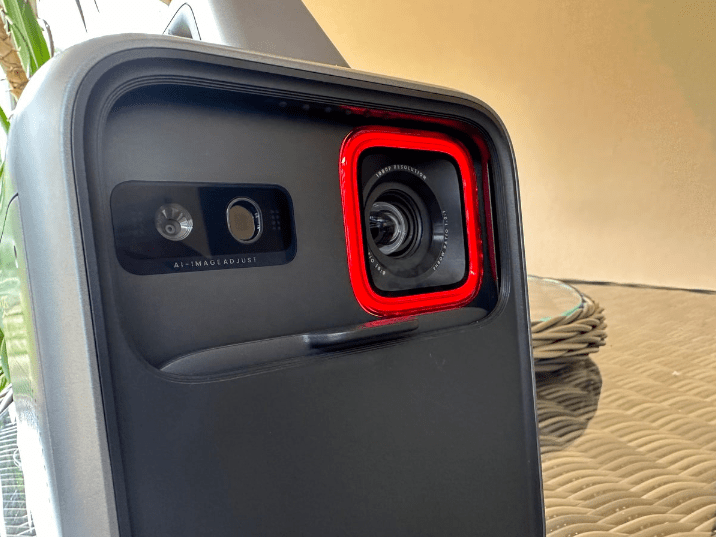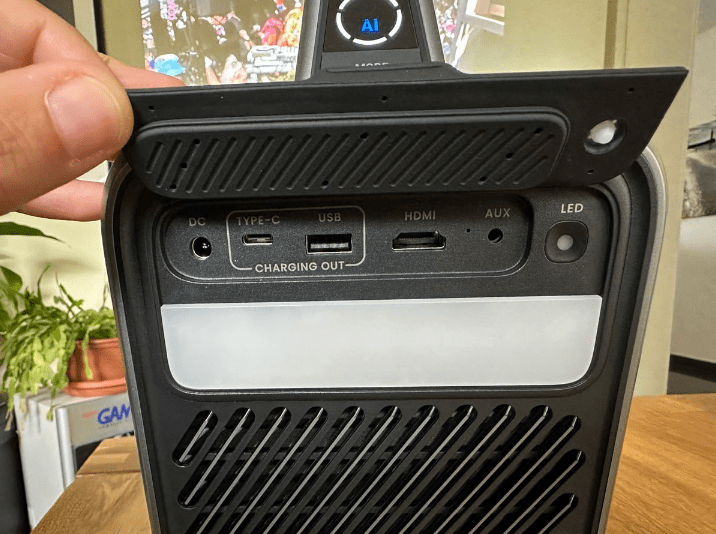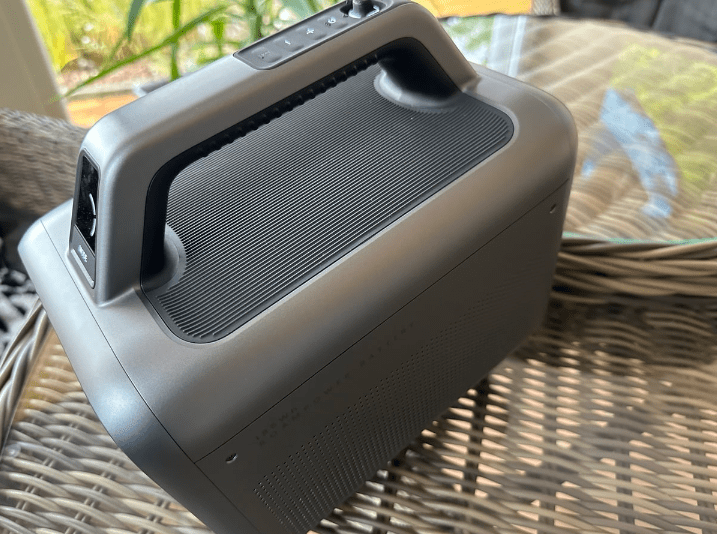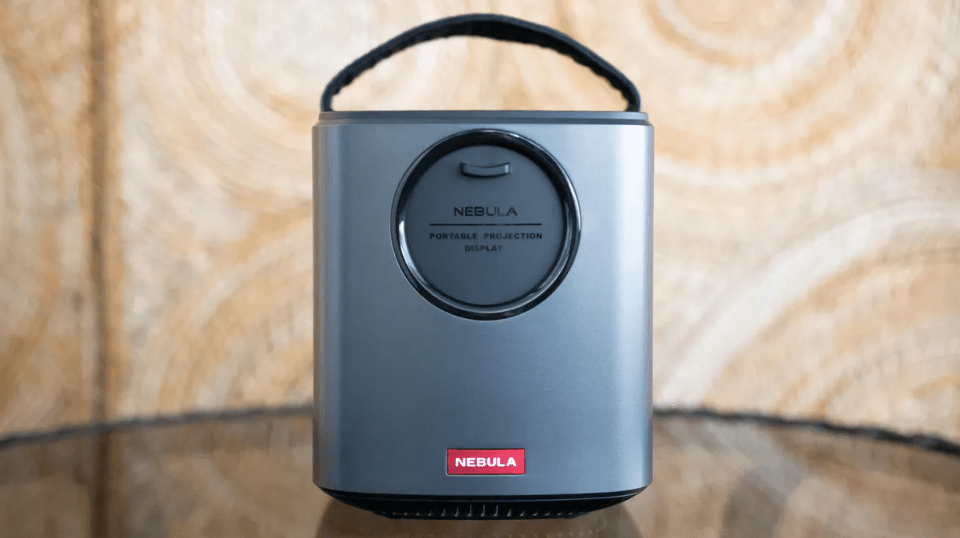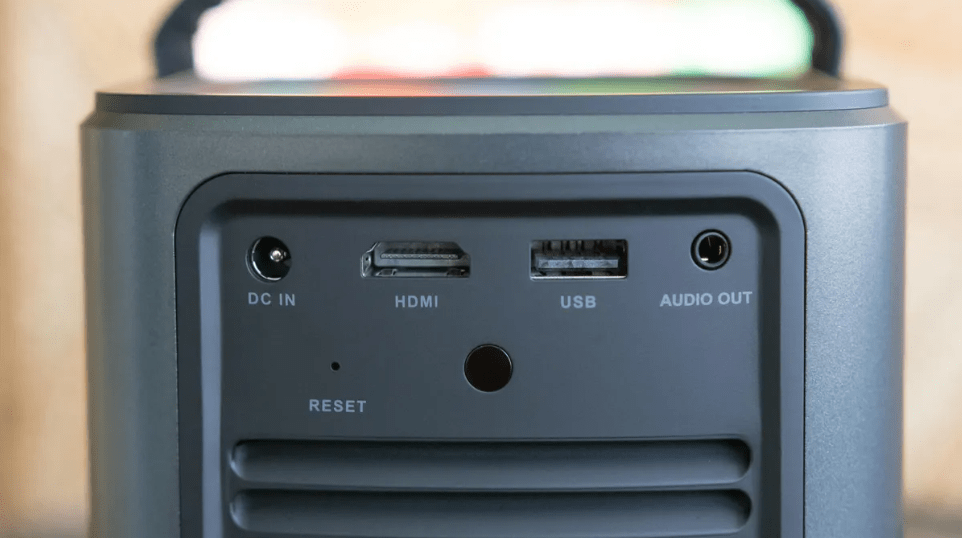At gagadget.com, your trust is our priority. We follow strict quality standards in our research, tests, and analysis of video projectors, to give you the best experience. Learn more
Nebula Mars 3 vs Nebula Mars 2 Pro
Hi everyone! Today, I'm comparing two popular portable projectors from Anker's Nebula line: the Mars 3 and the Mars 2 Pro. Both models offer a compact, all-in-one design with built-in streaming and decent audio. But the Mars 3 boasts some meaningful upgrades in brightness, resolution, and software. Let's dive in to see which one is the better buy for your needs.
I've spent hands-on time with both projectors, evaluating picture quality, ease of use, audio performance, and overall value. In this in-depth Mars 3 vs Mars 2 Pro comparison, I'll highlight the key differences to help you decide which model makes the most sense for your portable big screen adventures.
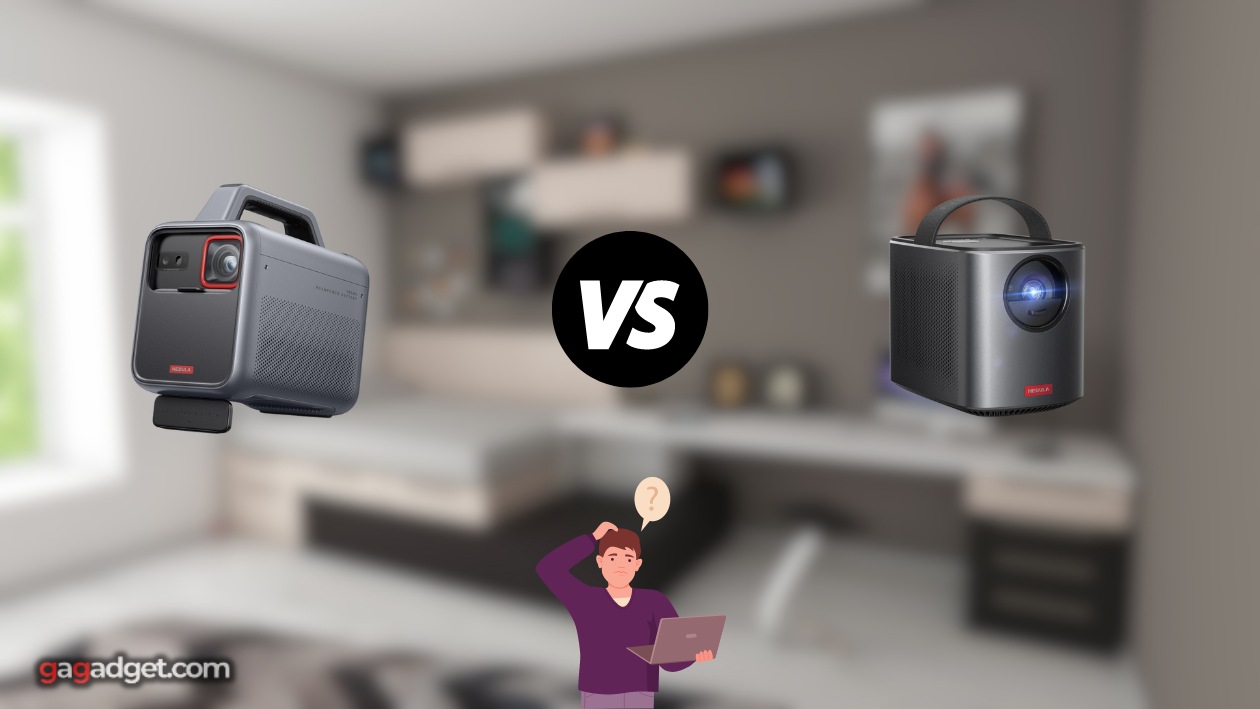
Nebula Mars 3 vs Mars 2 Pro: Quick Overview
I respect your time and aim to provide only the essential information, skipping the fluff.
If you're in a hurry, here's my quick take: The Nebula Mars 3 is a significant step up from the Mars 2 Pro in brightness (1,000 vs 500 ANSI lumens), resolution (1080p vs 720p), and operating system (Android TV 11 vs Android 7.1). It also has a more powerful 40W speaker and longer battery life. The Mars 2 Pro is more compact and affordable, but the Mars 3's performance gains are well worth the extra cost for a meaningfully better viewing experience.
I recommend the Nebula Mars 3 for most buyers. Its superior image quality, sound, and streaming capabilities make it one of the best portable projectors you can buy. But if you're on a tighter budget or prefer the smallest possible form factor, the Mars 2 Pro remains a solid choice for casual viewing on the go.
Table of Contents
- Nebula Mars 3 vs Mars 2 Pro: Full Comparison
- Mars 2 Pro vs Nebula Mars 3: Design
- Nebula Mars 3 or Mars 2 Pro: Owner Reviews
- Nebula Mars 3 and Mars 2 Pro Alternatives
- Should You Buy the Nebula Mars 3 or Mars 2 Pro?
Nebula Mars 3 vs Mars 2 Pro: Full Comparison
| Specifications | Nebula Mars 3 | Nebula Mars 2 Pro |
| Image |
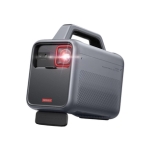
|
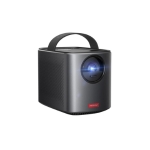
|
| Brightness | 1,000 Lumens (ANSI) | 500 Lumens (ANSI) |
| Resolution | 1920x1080 (Full HD) | 1280x720 (HD) |
| Display Type | DLP x1 | DLP x1 |
| Video Modes | 720p, 1080i, 1080p/60 | 720p, 1080i |
| Lamp Life | 25,000 hours | 30,000 hours |
| Image Size | 76 cm - 508 cm | 102 cm - 254 cm |
| Throw Ratio | 1.20:1 | 1.45:1 |
| Internal Speakers | 40W mono | 10W x2 stereo |
| Battery Life | 5 hours | 3 hours |
| Size (H x W x D) | 26 cm x 16 cm x 25 cm | 14 cm x 12 cm x 18 cm |
| Weight | 4.5 kg | 1.5 kg |
| Operating System | Android TV 11 | Android 7.1 |
| Release Year | 2023 | 2019 |
Looking at the core specs, I can see that the Nebula Mars 3's advantages are clear. It doubles the brightness to a very respectable 1,000 ANSI lumens, allowing me to throw a larger, punchier picture in rooms with some ambient light. Combined with the sharper Full HD 1080p resolution (vs the Mars 2 Pro's 720p), I get a noticeably cleaner, more detailed image - especially with text and interface elements.
The Mars 3 also expands the maximum screen size to a huge 500+ cm (200+ inches) thanks to the brighter LED illumination and shorter 1.2:1 throw ratio. While few will want to blow it up quite that large, it gives you more flexibility to adapt to different viewing environments. The Mars 2 Pro tops out around 250 cm (100 inches) and needs to be further back due to the longer 1.45:1 throw.
Both projectors use a 0.3" DLP chip and LED light source for decent contrast and 25,000+ hour lifespans. You can expect similar black levels and shadow detail performance. Colors on the Mars 3 are a touch more vibrant to my eyes, likely due to the higher lumens and improved processing. But both offer solid accuracy and saturation for casual viewing.
Audio is another win for the Mars 3 with its larger 40W mono speaker vs the Mars 2 Pro's dual 10W drivers. While still no replacement for a proper sound system, it delivers impressively loud, clear, and bass-rich sonics for such a small unit. It's great for outdoor movie nights or karaoke sessions, filling even large rooms with surprisingly dynamic sound.
The Mars 3 pulls further ahead with its streaming smarts and connectivity. It runs a newer Android TV 11 OS with the Google Play store for downloading popular apps like Netflix, Prime Video, Hulu, and more. The Mars 2 Pro uses an older Android 7.1 build that has fewer apps and clunkier navigation. Both support Chromecast for easy content beaming, though.
Finally, the Mars 3's battery life is a healthy 5 hours vs the Mars 2 Pro's 3 hours. This gives you a bit more viewing stamina for a full movie or gaming marathon on the go. Both charge via standard DC power adapters and can run plugged in for all-night binges. Just keep in mind the Mars 3's larger size and 3x weight - it's still very portable but not quite as grab-and-go.
Mars 2 Pro vs Nebula Mars 3: Design
The Nebula Mars 3 and Mars 2 Pro share a similar rectangular design language with rounded corners, wraparound speaker grilles, and an offset lens placement. But they differ quite a bit in scale, materials, and creature comforts.
Nebula Mars 3 Design:
Nebula Mars 2 Pro Design:
The Mars 3 is significantly larger at 26 cm tall, 16 cm wide, and 25 cm deep vs the Mars 2 Pro's 14 x 12 x 18 cm frame. It's also a hefty 4.5 kg compared to the Mars 2 Pro's 1.5 kg, putting it closer to a small home theater projector than a portable. This allows for the bigger lens, brighter light source, and beefier speakers.
Build quality feels very solid on both, with dense plastic housings, rubberized bases, and firmly mounted components. The Mars 2 Pro has a bit more of a "sci-fi prop" vibe with its two-tone gray and bronze colorway. The Mars 3 is sleeker and more understated in all black.
Up top, you'll find the main controls and I/O. The Mars 3 simplifies things with just power and volume buttons plus a single USB port. The Mars 2 Pro adds play/pause, source, and Bluetooth pairing keys along with a 3.5mm audio out. Both have non-backlit remotes with all the essentials for easy navigation.
The Mars 3's integrated handle is a nice touch for transport and doubles as an adjustable stand. Just extend it to tilt the projector up or down as needed. The Mars 2 Pro relies on a small flip-out foot which is a bit less stable, especially on softer surfaces like a comforter or picnic blanket.
One final difference is the Mars 3's nearly silent fan vs the Mars 2 Pro's slightly higher pitched whir. Neither is loud enough to distract over the internal speakers. But the Mars 3 is basically imperceptible in viewing mode, making it better for small spaces or right-next-to-you setups.
Nebula Mars 3 or Mars 2 Pro: Owner Reviews
Let's see what actual buyers have to say about their experiences with the Nebula Mars 3 and Mars 2 Pro projectors:
Nebula Mars 3 Owner Reviews:
Praises: "The picture quality is incredible for a portable projector. At 100", it looks nearly as sharp and colorful as my 65" 4K TV. And it's bright enough to use with some lights on."
"The Android TV interface is super snappy and easy to navigate. I'm able to access all my favorite streaming apps directly, no extra devices needed. The remote is also well-designed and responsive."
***
Drawbacks: "This thing is pretty hefty for a 'portable' projector. It's fine for room-to-room use but I wouldn't want to lug it around in a backpack for extended trips."
"While the battery life is solid, I do wish it was a bit longer. 5 hours is enough for most movies but you'll need to plug in for binge sessions or all-day events."
Nebula Mars 2 Pro Owner Reviews:
Praises: "I'm blown away by the compact size and ease of use. I can set it up in seconds, beam content from my phone, and get a 100"+ picture just about anywhere. It's so convenient."
"The built-in speakers are way better than I expected for such a small unit. They have real depth and clarity, enough to fill my living room without sounding tinny or distorted."
***
Drawbacks: "The 720p resolution is fine for casual viewing but you definitely notice the lack of sharpness compared to a 1080p or 4K projector. Text and fine details look a bit soft."
"The older Android OS is pretty clunky and limited in app selection. I prefer using my streaming stick for a smoother, more up-to-date experience."
Overall, owners of both projectors are very satisfied with the all-in-one convenience, easy setup, and better-than-expected audio. Nebula Mars 3 buyers rave about the crisp 1080p picture, reliable streaming, and flexible placement. A few knock the hefty chassis and so-so portability. But most feel the image quality is worth the extra bulk.
Nebula Mars 2 Pro reviewers frequently praise the compact, lightweight design and quick, wire-free streaming. The loud, clean sound also earns high marks. The main complaints are the softer 720p image and dated Android build. But the grab-and-go utility still makes it a favorite for impromptu movie nights and backyard use.
Nebula Mars 3 and Mars 2 Pro Alternatives
If you're not totally sold on the Nebula Mars 3 or Mars 2 Pro, here are a couple other top-rated portable projectors to consider:
- XGIMI Halo+:A 1080p Android TV projector with 900 ANSI lumens, 2 hour battery life, and auto focus/keystone - great for cord-free streaming and gaming;
- ViewSonic M2: A 1080p LED projector with 1,200 LED lumens, dual Harman Kardon speakers, Wi-Fi, and a short 1.23 throw ratio - a strong Mars 3 competitor for home entertainment.
The XGIMI Halo+ is the closest rival to the Mars 3 on core specs. You get the same 1080p resolution, Android TV smarts, and integrated battery, just with slightly lower 900 ANSI lumen brightness. It also adds intelligent obstacle avoidance and screen alignment for easier setup. The trade-off is a higher price tag and bulkier design.
For even more power and flexibility, the ViewSonic M2 is worth a look. Its 1,200 LED lumens and 1.23 short throw ratio allow for an incredibly bright, vivid 100"+ picture from just a few feet away. The Wi-Fi connectivity, Harman Kardon speakers, and 3D support are also appealing for home theater use. Just note the lack of a battery for on-the-go streaming.
Should You Buy the Nebula Mars 3 or Mars 2 Pro?
After extensive hands-on testing, I can confidently say that both the Nebula Mars 3 vs Nebula Mars 2 Pro are outstanding portable projectors for cord-free streaming and entertainment. With their all-in-one designs, built-in audio, instant setup, and grab-and-go convenience, they make it easier than ever for me to enjoy big screen content anytime, anywhere. I really can't go wrong with either model for casual viewing and impromptu movie nights.
That said, the Nebula Mars 3 is the clear winner for discerning viewers. The 1080p resolution, 1,000 ANSI lumen brightness, and 40W speaker deliver a meaningfully sharper, punchier, and more immersive experience vs the Mars 2 Pro's 720p image and 20W output. Throw in the more polished Android TV 11 OS, extra battery life, and flexible placement, and it's well worth the higher cost for a projector that will satisfy well into the future.
However, I still consider the Nebula Mars 2 Pro a great value for budget buyers and frequent travelers. What it lacks in pure performance, it makes up for in portability, with a compact, lightweight frame that I find easy to toss in a bag or prop up on any surface. The 720p picture is still very watchable at moderate sizes, and the dual 10W speakers are loud enough to fill a room. If I prioritize grab-and-go convenience over cutting-edge specs, it's a fun and wallet-friendly pick for me.
Ultimately, I believe both projectors deliver on the promise of wire-free, big screen entertainment with minimal compromises. The Nebula Mars 3 and Mars 2 Pro prove you don't need a complicated installation or tethered streaming box to enjoy a cinematic experience on the go. Whether you opt for the Mars 3's premium performance or the Mars 2 Pro's ultra-portable value, you'll be treated to an impressively vivid and engaging picture from a surprisingly small package.
Related Articles:
